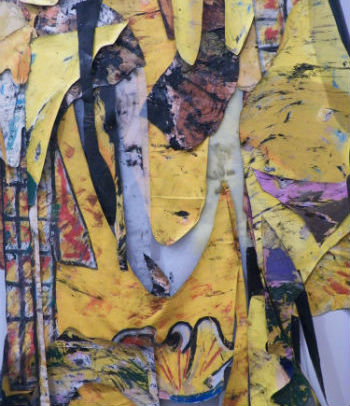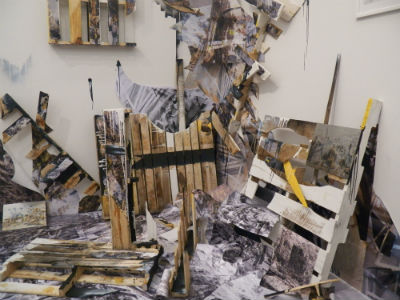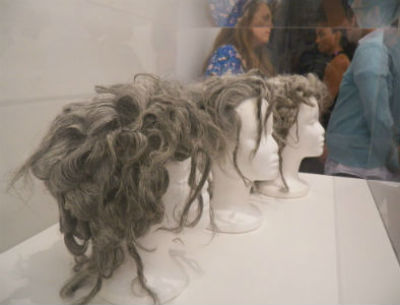The Other Side of Now: Foresight in Contemporary Caribbean Art curated by Maria Elena Ortiz, Associate Curator at Perez Art Museum Miami (PAMM), and Dr. Marsha Pearce, Cultural Studies Scholar based at The University of the West Indies St. Augustine Campus, opened at PAMM on Thursday July 18.
 The exhibition features the work of 14 artists from the Caribbean and the diaspora who explore the possibilities of a Caribbean future. Tasked to think about what might a Caribbean future look like, the artists created works based on their own personal experiences, the region’s geography, and its colonial, and ecological history. Through paintings, installations, videos, sculptures, and performances what is made clear in this exhibition is the inevitability of more questions, perspectives, and directions.
The exhibition features the work of 14 artists from the Caribbean and the diaspora who explore the possibilities of a Caribbean future. Tasked to think about what might a Caribbean future look like, the artists created works based on their own personal experiences, the region’s geography, and its colonial, and ecological history. Through paintings, installations, videos, sculptures, and performances what is made clear in this exhibition is the inevitability of more questions, perspectives, and directions.
“We’re not just talking sun and sea and sand, but how do you see pass that and see the depths”, questioned Dr. Pearce at the opening event… “We wanted to think more about that fourth dimension, time. How do we address that, and how do we expand that and not just think about it as the Caribbean as a past moment or the present moment, but to push that picture of the Caribbean, to create a more full picture of the region”.
Colonial Reality
One example of looking beyond the now is Trinidadian-born artist Alicia Milne. Her work looks at stereotypes boldly and fights against it. She presented a series of souvenir plates that are made in China depicting typical Caribbean scenes. But, the artist adds Chinese motifs to these plates as a way of pointing to Chinese involvement in the Caribbean today. In a sense, the artist is looking at this changing Caribbean space as a type of new colonial reality perhaps.
Born in Puerto Rico, Angel Otero’s work is another illustration of how we in the Caribbean use ingenuity to create our own future. He paints on glass then scrapes off the oil paint and hangs the resulting ‘skins’ as new creations, producing expressionistic work that speaks to rebirth, the kind of rebirth many go through after a devastating natural event.
Putting it into perspective, Ortiz noted: “Catastrophe and trauma is embedded in a lot of the work you see out there, for obvious reasons. How can we instigate a little bit of a different kind of schematic within the field? When the 2017 hurricane season happened that was the moment in which the Caribbean was very much put into test and there was a lot of devastation. That’s also when our conception of time shifted a little bit, to think about the future as the present now. So, what can we do now, today to create a better situation”, Ortiz asked.
As if in answer to that question, artist Louisa Marajo, from Martinique, recreates work from previous pieces, demonstrating the act of creating, destroying, surviving, and rebuilding the future; the kind of action that always takes place after something like a hurricane.
“It’s the idea of possibilities, it’s the idea of labour. And it’s also about a way of seeing”, Dr. Pearce remarked.
Envisioning
Jamaican artist Deborah Anzinger’s work is a complex language of labour, economics, and survival. Her use of materials such as polystyrene and organic matter such as aloe shows a relationship with the environment and the necessary industrial material as a way of envisioning a Caribbean future.
 Just as Anzinger explores incongruity, Andrea Chung, of Jamaican-Chinese descent, uses her work to question the Caribbean’s colonial and postcolonial experiences. Perception, truth, and seeing are juxtaposed as she chooses her material purposefully. A series of styrofoam heads covered with wigs of coiffed, and some unkept, European hairstyles is not your typical ‘paradise’, leaving viewers to question their own stereotypes.
Just as Anzinger explores incongruity, Andrea Chung, of Jamaican-Chinese descent, uses her work to question the Caribbean’s colonial and postcolonial experiences. Perception, truth, and seeing are juxtaposed as she chooses her material purposefully. A series of styrofoam heads covered with wigs of coiffed, and some unkept, European hairstyles is not your typical ‘paradise’, leaving viewers to question their own stereotypes.
Importantly, this exhibition does not force artists into themes. Instead the question of what does a Caribbean future look like was purposely open-ended, allowing them to explore their own perspectives, experiences, and creativity producing a unique hybridity of voices that touches the region.
The exhibition continues until June 7, 2020. Other artists include Charles Campbell, Hulda Guzman, Deborah Jack, Manuel Mathieu, Lavar Munroe, Sheena Rose, Jamilah Sabur, Nyugen Smith, and Cristina Tufino.


